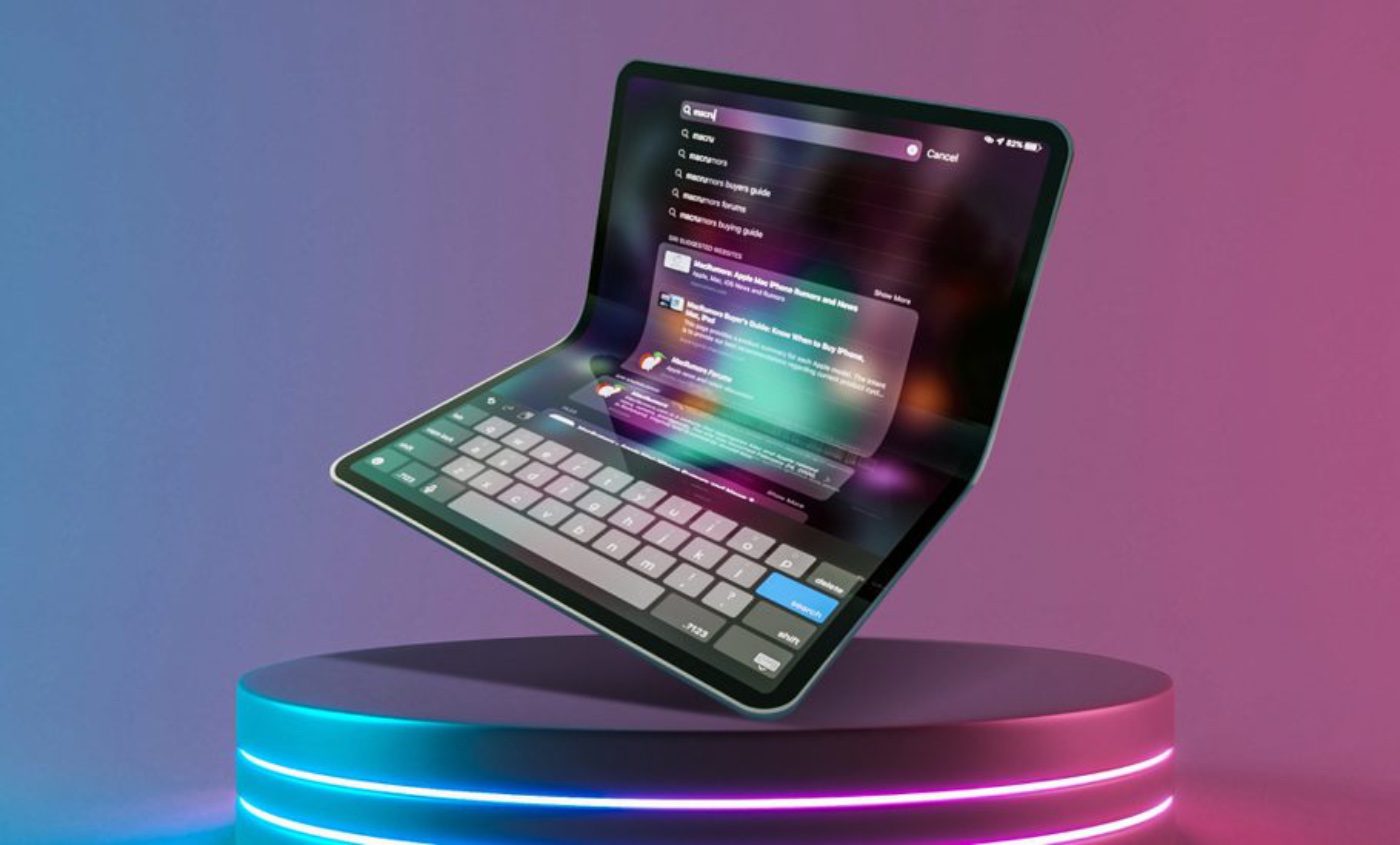Apple continues to be granted patents related to flexible displays for iPhones, iPads, even Macs. The latest is number US 12066867 B2for “Electronic Devices With Flexible Displays Having Fastened Bent Edges.”’
A July 23 DigiTimes report says Apple is conducting research and development for its first “foldable iPhone,” with a potential release targeted for 2026. There have also been rumors (and patent filings) for foldable iPads and iPhones.
As for a foldable MacBook, it would purportedly have an all-display design. A single large screen would be able to be folded in half, and the device would be dual-use. It would serve as a notebook when folded in half, and could be used as a monitor when paired with an external keyboard.
About the patent
In the patent Apple notes that, obviously, electronic devices such as portable computers and smartphones are often provided with rigid displays made from rigid display structures. Rigid display structures often include a significant amount of inactive border area for around the display for accommodating display circuitry for operating display pixels in an active region of the display.
It’s not uncommon for the width of the inactive border to be up to a centimeter wide or more. This type of wide inactive region tends to make displays bulky and requires the use of electronic device housings with wide bezels, notes Apple.
Flexible display technologies are available that allow displays to be flexed. In a typical flexible display, an array of light-emitting diodes such as organic light-emitting diodes may form a planar active display region on a flexible substrate. Inactive edge portions of the flexible substrate are sometimes bent away from the plane of the active region.
However, Apple says that a flexible substrate with bent edges can have a tendency to return to its original flat shape. This tendency can cause a bent portion to become separated from a mounting structure to which it is adhered or to exert an undesired force on another component or structure in the electronic device.
Apple’s patent is designed to deal with such issues. The tech giant wants to minimize the width of the inactive region in a display and to otherwise improve displays for electronic devices.
Summary of the patent
Here’s Apple’s abstract of the patent: “An electronic device may be provided with a display having a flexible substrate with fastened bent edges. The flexible substrate may have an active region that includes an array of light-emitting elements such as organic light-emitting diodes. The flexible substrate may also have inactive regions that lie outside of the active region. The bent edges may include portions of the inactive regions and portions of the active region.
“The bent edges may be wrapped to conform to the shape of an internal support structure. The bent edges may be fastened to the support structure with fastening members that attach a housing member or an internal clamp to the support structure. The bent edges may be secured between the housing member or the internal clamp and the support structure. The fastening members may be engaged in openings in the support structure and may pass through or alongside the bent edges.”
I hope you’ll help support Apple World Today by becoming a patron. All our income is from Patreon support and sponsored posts. Patreon pricing ranges from $2 to $10 a month. Thanks in advance for your support.





